Whether you’re a hunter, or photographer, or just an observer, seeing animals in their natural habitat is a wonderful treat when travelling. But what do you do when you don’t see them and all of a sudden one is in your path?! Here are some of our tips on how to safely share the road with wildlife big and small. Know the risks, plan your routes, and most importantly, be prepared!
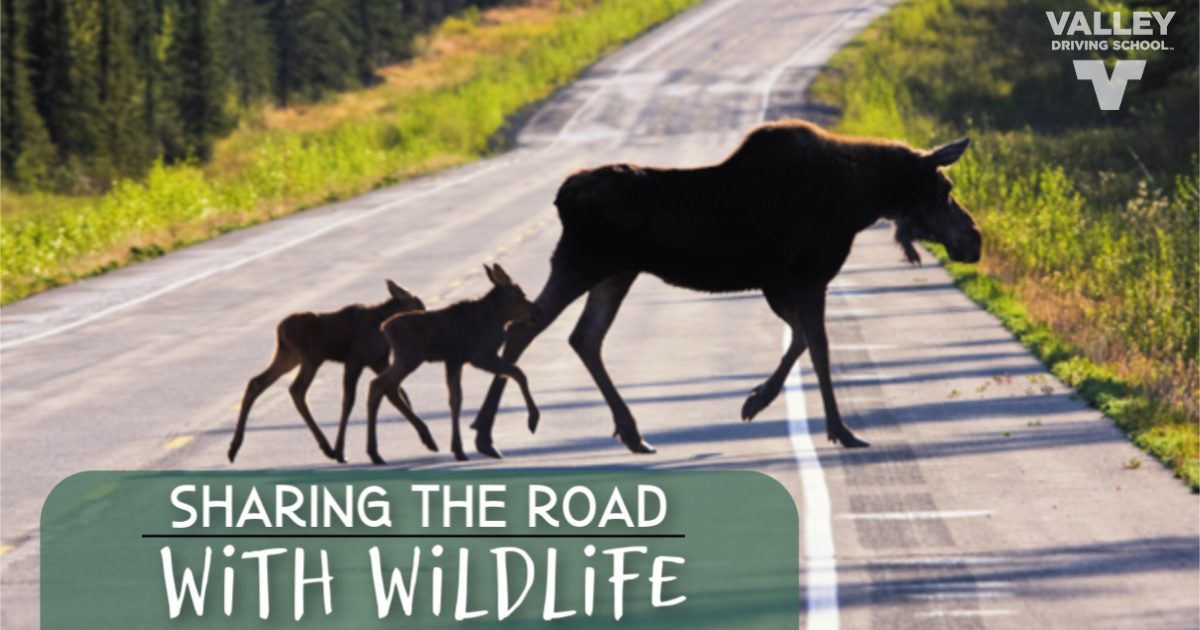
In this week’s post, we’ll be looking at how you can safely share the road with wildlife.
Know the Risks
Whether it is your daily commute or a road trip, being aware of road conditions and potential risks is incredibly important. Some routes will have a higher risk of a wildlife encounters than others regularly and an even higher risk at certain times of the year or certain hours of the day.
In the spring fresh greenery on the roadside and in ditches and in the winter salt and minerals on the road used for winter highway maintenance will draw wildlife looking for food closer to highways and roads. Although we may see the road as a dangerous place for animals, they don’t always have the same perception.
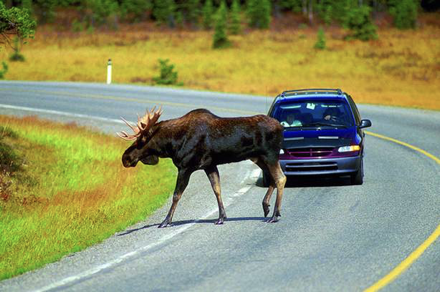
October and November are the highest risk months for wildlife encounters, with other spikes in early spring. Peak hours for encounters are from dusk to dawn, early morning, and during the evening. Wildlife collisions most often involve deer, at 76%, with moose at 7%, and elk, bear and other animals including coyote, skunk and raccoons making up the other 17% of collisions. September and October are high risk months for bear encounters as they forage closer to communities in preparation for hibernation.
Plan Your Route
Certain highways and specific stretches of those highways also statistically show higher wildlife encounters. The Wildlife Accident Reporting System (WARS) released data in 2012 for collisions with deer, elk and moose, and found approximately 4500 collisions in total for British Columbia. Highway 1 and Highway 19 on Vancouver Island had approximately 529 wildlife collisions, and Highway 3 had approximately 643 collisions, with high risk areas being Fort Steele to Elko, Yahk to Cranbrook and Osoyoos to Cascade. One of the longest stretches of highway running from the Southern Interior all the way to Northern BC is Highway 97 which had approximately 1018 wildlife collisions, with the high-risk section being between 100 Mile House and Quesnel.
ICBC reported that 11,000 claims were made, resulting in $41 million dollars of claims in 2013. There were 6,100 confirmed wildlife mortality collisions and an estimated 24,400 collisions involving wildlife of all sizes - that is approximately 67 collisions per day! These stats are only going to help you plan your route however, that is just a small factor of sharing the road.
Highway 3 features two Wildlife Detection Systems, which have thermal cameras that work in conjunction with radar sensors and alerts drivers to their presence with flashing roadside signs. This pilot project has been in effect since 2016 and has shown success in bringing down the rate of collisions. While they are still only along Highway 3, the Ministry of Transportation is always taking feedback for other routes that may benefit from the same devices!
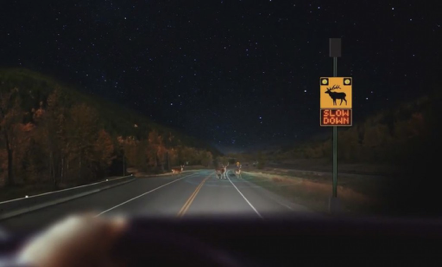
Be Prepared - See and be seen
The largest factor in sharing the road with wildlife is being prepared, knowing what clues to watch for to alert you to a potential issue and how to react if a collision is inevitable and what to do if a collision occurs. Vehicle maintenance and a full pre-trip inspection of your vehicle are the first step in preparing for your daily commute or road trip adventure.
Ensure your vehicle’ s headlights, taillights and signals are all in full working order and properly aligned. Having a clean, crack free windshield and plenty of windshield washer fluid, provides you with clear visibility on your travels. Seatbelts, as always, should be fully functional and you and your passengers need to be wearing them at all times, and check that your horn works. You should always carry a full first aid kit and flashlight in your vehicle and when travelling on longer journeys and at certain times of the year you should be sure to pack a blanket, water, and snacks. If you have a vehicle breakdown or an incident involving wildlife, your vehicle may not be in a condition to continue on your journey. Having some supplies with you will ensure you stay warm and safe until help arrives. Being over prepared is better than being under prepared.
Being a defensive driver is also an important factor when there is a potential for sharing the road with wildlife. You and your passengers should be actively watching for movement or shining eyes on the side of the road and on the road. You should be extra cautious from dusk to dawn when the light levels are low and animals are typically more active. Watch for Wildlife Warning Signs; road signs that are yellow diamonds or rectangles with animal symbols in them that will warn you of a hazardous and/or high-risk area ahead. There is no need to reduce your speed in these areas unless the sign specifically states a speed limit reduction on it, however these signs may state a distance to remain cautious within.
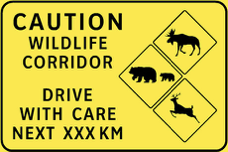
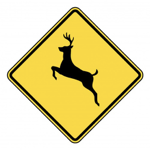
Animals may seem like their behaviours are sporadic and unpredictable but they act on a “fight or flight” response, the same way they would when being pursued by a predator. Once they feel you have intruded their safe zone they may try to flee or they may panic and freeze, and different animals often react in different ways. Deer will often run in a twisting or dodging motion which may cause them to jump right in front of you, whereas moose will often try to flee by running alongside the road and your vehicle. If it is safe to do so, slow down and stop until the animal leaves the road and keep in mind that most animals travel in groups or herds so if you see one, there is likely more nearby, so be extra cautious!
If you see an animal on or near the roadway while driving, the first thing you should do is ease off the accelerator and cover the brake pedal. Look for an out....space alongside the roadway. Check your rear-view mirror for vehicles approaching from behind and watch for oncoming vehicles. Brake and steer as necessary to avoid contact with the animal or other vehicles on the roadway.
If you have made every attempt to avoid the animal but a collision is inevitable you need to look where you want to go and not at the animal. Page 130 of the ICBC Learn to Drive Smart manual states “If the animal is large and you can’t stop in time, brake firmly and steer to strike the animal at an angle. Let up on the brake pedal just before hitting the animal. This will cause the front of your vehicle to rise and reduce the chance that the animal will come through the windshield.”
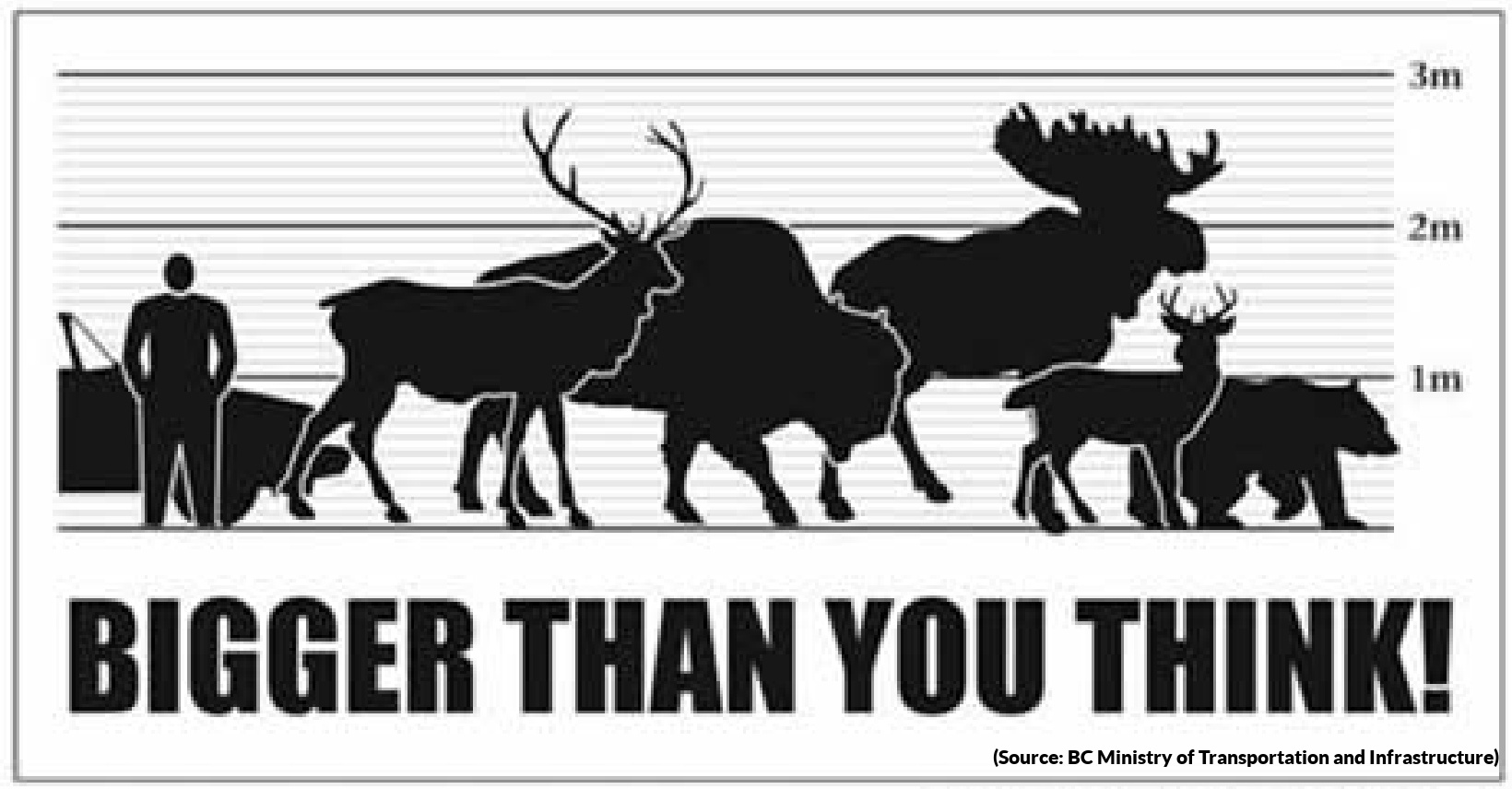
If you have been in a collision with an animal you need to stay on scene, pull your vehicle to the side of the road (if it is operational and safe to do so) and turn your hazard lights on to warn other drivers that there is a situation ahead. Assess if you or your passengers are injured and call 911 if necessary, and begin first aid treatment. If there are no injuries but the animal is still on scene or you come across a dead or injured animal on the road, contact the non-emergency RCMP or the highway maintenance contractor for that area. If the animal is on the roadway, and it is safe to do so, pull over and turn your hazard lights on to warn other drivers of the situation. Never approach or try to move the animal yourself, it could just be unconscious, approaching or touching it could startle it and put yourself in greater danger.
--
Whether it is your daily commute or a road trip adventure, wildlife can be a part of any drive you take through British Columbia. Planning ahead, being aware and choosing defensive driving actions, will keep you, your passengers, and our furry woodland creatures safe!
